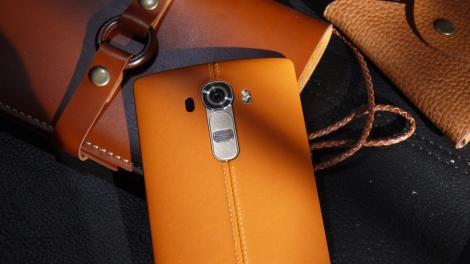
Introduction and design
NOTE: the LG G4 units that have been sent out worldwide for review aren’t finished software, so aren’t indicative of the final retail experience you’ll be buying. As part of TechRadar’s reviews guarantee, we’ll only give a star rating and final verdict when we receive the finished product, which is why this still remains a hands on review.
When the final model lands we’ll update this review so you know our findings will match your experience. But in the meantime here’s our extended preview to whet your appetite:
LG is on something of a comeback trail – the brand that killed it in the feature phone market then fell apart when smartphone became ‘a thing’ is now starting to show signs it can be a front runner again.
The LG G4 is the result of years of forward momentum, combining the insane sort of specs we’re used to seeing from the Asian manufacturers with a recognised brand and decent attempt to create a usable user experience.
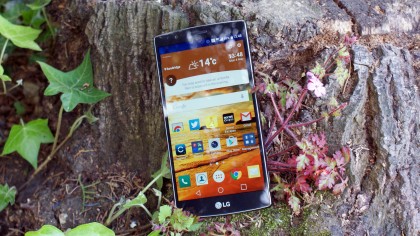
But the last few flagship ‘G’ phones have had one thing in common: loads of good bits, but a slightly uneven finish. It’s lacked the final polish that would have made it a market leader, but usually combined it with a cheaper price and therefore evened out the equation.
The LG G4 does a few things differently though. This time the brand has gone for some elements the user will actually want: longer battery life, improved camera and upgraded screen, and combined them with a slightly outlandish design: covering the thing in a leather coat that’s certainly something the rest of the market hasn’t seen yet.
There’s an early sticking point that I didn’t expect though: the LG G4 costs the same as a Samsung Galaxy S6, and more than an HTC One M9 and iPhone 6. Spec for spec I’d argue it warrants that price point, but it’s taken away one of the key cards LG usually plays.
I’ve no doubt that when it starts shipping the cost will come down, but LG is clearly trying to position itself as a premium brand with the price tag to go with it.
Design
I’m not sure what LG is doing with the G4. There are two options on offer, and I’ve been testing both. The first is a leather back, and the one that LG is pushing as the ‘premium’ model, and the latter is the polycarbonate version with a diamond effect.
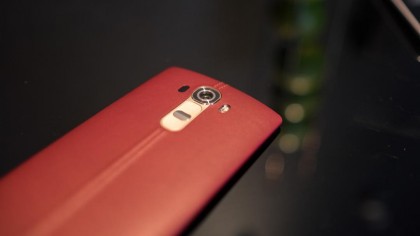
It’s attractive enough, and has the same brushed metal effect as last year, but lacks anything like the ‘wow’ factor LG is going for with the leather option.
Let’s start with leather (on a separate note: a dangerous statement for a first date). I’m really disappointed with what LG has done here. It’s too thinly stretched over the back of the phone to be considered premium, and when you’re fighting against the beauty of the HTC One M9, it’s a real misstep.
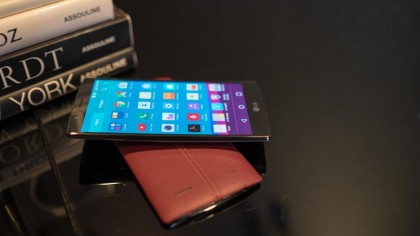
Leather could have been a good idea, if it had the same feel as an expensive wallet or watch strap. But the thin material used here almost feels plastic, not premium. The Moto X has a leather back option, and I know some people love it, but for many a leather back is a novelty, not a statement of wealth, luxury or quality.
And let’s be honest: the leather back is just that, a back. One you can buy and clip on, rather than a part of the phone’s design itself.
When it comes to the plastic version, the LG G4 doesn’t feel as nice in the hand as the rest of the market’s big hitters: the HTC One M9 has a really well-crafted finish, the iPhone 6 a lightweight ceramic feel that begs you to fondle it, and the Galaxy S6 has shown that Samsung’s not completely inept when it comes to offering a phone made of metal and glass.
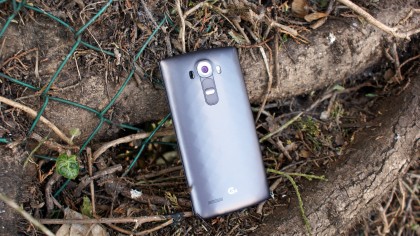
The LG, on the other hand, is all about being lightweight and ergonomic in the hand. The rear cover bulges out a little to curve into the palm, which is designed to make it nicer to hold and allow for a greater battery space (3000mAh, compared to the 2500mAh on offer in the Galaxy S6, for instance).
One of the big features LG is making a big deal of is the fact said battery is removable, which explains the need for a plastic cover (easier to remove and less likely to break than a metal choice).
I’m not sold on the need to have removable battery. I know some people love the safety it brings, the idea that you can carry around a spare, but in reality I’d rather use one of the battery packs I’ve become accustomed to slinging in my bag – plus they’re universal.

Making a battery removable does have the added benefit of letting you change it out if the power pack starts playing up a year and a half into your two year contract, but it comes at the cost of design. There’s a reason the S6, One M9, iPhone 6 and Sony Xperia Z3 all look better than the G4, and that’s the fact they have unibody chassis.
I’m glad LG has offered this choice just so one of the market’s big hitters is doing it, and if you’re one of those that think the leather is equally as premium as metal, then this is a great feature to have (the cover also hides the microSD slot too).
But the lack of unibody has minimised the amount of battery space available and made a less attractive phone.
The phone itself is large without being unwieldy. Yes, we’ve become used to having massive phones in our hands, but where the LG G3 was just on the edge of being too big, this 5.5-inch screened device has been curved and hewn to make it a little less sharp to use in the hand.
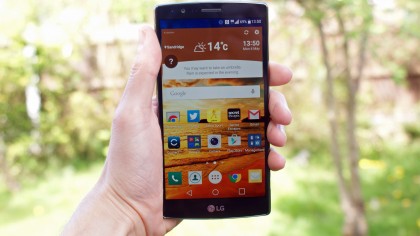
You’ll still need to wriggle it around to use it day to day, but given the trade-off gives you a phenomenal QHD screen, it’s worth it. That display is slightly curved, but I’ve not seen a great deal of use for that in general use.
The rear keys are present again – one of LG’s favourite design tweaks – meaning that there’s very little buttonry around the phone. The rear keys are easy to find, have a pleasant ridged effect and are distinct from other elements of the phone. I came to love them on the LG G2 and still find them really nice now.
The only other thing to point out is the infra-red port on the top of the phone – it’s slight and most will miss it (and I’d rather it was on the rear of the phone as it makes controlling the TV a little easier when the phone is held up) but it’s good to see its presence continuing.
Display
This is where LG first begins to flex its muscles: the display on the LG G4 is simply mind-blowing. I’ve often said that the screen on the phone is the thing most brands have to get right if there’s any chance of making their phone a critical success among users, as it’s the element most will use more than anything else.
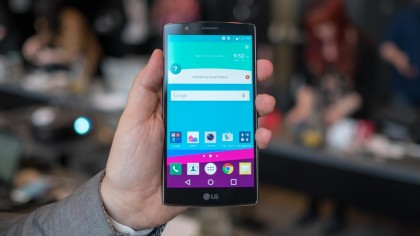
However, while LG has a rich heritage in making impressive screens, it didn’t use that power with the G3, making a darker screen that ticked the headline-making box of being the highest-res on the market.
This time around, the difference is quantum. Literally. The new Quantum IPS display on the LG G4 is really, really nice to look at, and vies for top spot with Samsung as the best on the market.
At 5.5-inches, it’s not the easiest to navigate around with one hand… in fact, it’s impossible. But what you get in return is a large display that displays everything amazingly well. The contrast ratio is the part that impresses me the most – it’s almost as deep and rich as the Samsung Super AMOLED offering, which is really cool to see from an LCD.
The colours look rich and vibrant, which LG is talking up because it adheres to a more modern cinematic standard – the brand is all about making sure the buying public equates this phone to ‘cinema quality’ images.
It’s an irrelevant point in practice, as it just means the colours are a little deeper, and the red especially are brighter than ever. There’s a lot of science about how we all perceive different colours more strongly than others, but in reality it just means this is a very colourful screen.
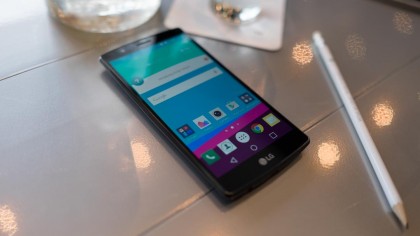
I really miss the ability to tweak the settings up and down – I’m all for deep, rich and even over-saturated colours, but many hate that – and one of the big advantages Samsung has is the option to change the intensity of the screen.
The other cool thing about the display is the ‘Knock On’ effect that allows you to wake the phone from sleep. It’s really useful as it prevents the need of hunting around on the back of the phone for the power button.
It’s such an intuitive way of opening the phone that I constantly do it on other handsets, irritated when it doesn’t happen. It’s not super accurate, sometimes needing a second to ‘rest’ before opening up, and the ‘Knock Code’ (meant to replace the PIN or swipe code method of security) is too fallible to be considered a really useful too.
Knock Code allows you to tap certain portions of the screen to create an invisible pattern that’ll open your phone, but having used this for months I’ve never felt like it really works accurately all the time in the same way as the fingerprint scanner on the iPhones or the exceptionally speedy option on the Galaxy S6.
Some people swear by it though, so if you can settle on a code that’s perfect for you and your tapping it’s a nice option to have.
Interface
Last year, with the G3, LG brought out a more mature, flat and altogether less cartoonish interface than seen in previous mental splatterings for its user experience.
That option has been refined well again in the LG G4 – it’s pretty colourful (in a pastel sort of way) but looks refined and takes Google’s Material design language to present cleaner icons.
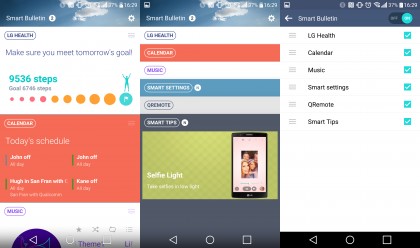
The notification bar in particular is cleaned up, with fewer things showing there when you’re pulling the shade down to see what’s happening in your world. Where before there were a million sliders and icons on here, there are fewer now so it’s more usable.
Q Slide apps are still on there, and I still can’t really find a reason to use them. In theory, the idea of being able to float a calculator or contacts list over the top of the screen, resizing as you go and reducing the opacity to see what’s behind seems like a good idea.
It means I could be browsing something on the internet, suddenly need a calculator, and then not have to drop out of the app just to do my slick sums.
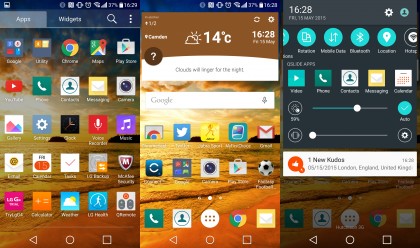
But even at 5.5-inches, there’s not enough space for this. Every time I end up just opening the app full screen and then flicking between the two… I feel things like Q Slide just get in the way of what’s good about the phone.
Actually, it’s not super easy to flick between apps, as pressing the ‘all running apps’ button (a lovely minimalist square on the bottom set of navigation icons) takes a second to open, which is infuriating when this phone is supposed to have a powerful processor at the heart.
And that’s where we get onto the reason this isn’t going to be a final review just yet: the LG G4 is riddled with small bugs that make me unwilling to review it as the finished article.
The screen can’t auto-rotate, the camera takes a couple of seconds to load from sleep (at least) and the homescreen rebuilds when you’ve used a couple of apps quickly, with the wallpaper, icons and widgets all disappearing to be flashed back up again.
Like the design, this is unbecoming of a phone that’s supposed to be absolutely cutting edge. However, the good news is this is heavily indicative of a phone that’s not quite finished – which also could mean the battery life will improve too.
Smart Notice was the big news from LG last year, with the phone able to tell you important things when you needed to know them, clue you in on the weather and generally be your fun-time buddy on the go.
It was rubbish.
Highlights included: ‘FRIEND had a birthday today’ and ‘The shipping forecast for New York is…’ – not exactly the cutting edge information we’ve all been waiting to hear.
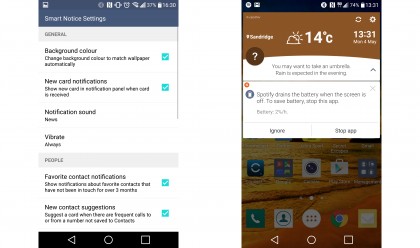
This year things are a lot better though. While there were a friend / birthday incidents again, in just a few days there were many more instances where I got a lot of useful hints, with questions about adding frequent callers to my contacts and genuine insight into the weather, telling me it would be windy later that day and a coat would make a lot sense.
The left homescreen, where HTC houses Blinkfeed and Samsung its weird Flipboard info, is no longer just the pointless ‘tutorial videos’ that we saw last year. It’s now myriad widgets for things like LG Health, a music player and updates to your calendar. It looks nice enough, but it’s pretty useless unless you’re using your phone to track your health.
I wouldn’t recommend it though – you won’t get accurate step data, and you’ll need to keep adding bits and pieces to the app to work out how healthy you’re being.
The rest of the widgets are fine, but I didn’t find anything was particularly useful – the calendar and music widgets both appear contextually in the notification panel, and are more useful there.
It would be great if I could have things like a Spotify widget in there – or other options I want – but apart from Smart Settings (which open apps or start certain actions when you enter a certain zone or connect something to the phone) I barely used this panel at all.
Overall, I’d say LG has once again taken a massive step towards being seen as a relevant choice to being your next smartphone by making the user interface more mature and useful – like all brands, it’s thrown in some ‘differentiators’ to help market the phone but you can turn off most of these, as they can obscure the good bits of the phone.
Battery
Once again, I’m confused by LG. I’m not sure what it’s up to with the battery life of its flagship phone, as while it’s got some decent specs on board, it doesn’t last long enough – especially compared to how good this brand can be on battery life.
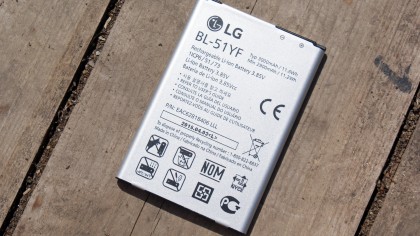
Before we get any further it’s worth remembering that the LG G4’s software clearly isn’t finished and optimised at this point – and one of the last things any brand will do before getting a phone ready for retail is clean up the battery life, tweaking the CPU to ensure optimum efficiency.
Worryingly this software has gone on sale in South Korea already, but I’m willing to bet that the UK / US and other parts of the world see an upgrade before the phone goes on sale.
But for now, here’s how the battery will last over the course of a day: Getting up, spending 10-15 minutes messing about on the phone before deciding that it’s a terrible way to start the day and…you know what? Emails can wait…will lead to an 8-10% battery drain (with brightness set to auto).
Then a ride to the station, Bluetooth music streaming, for about 10 minutes. The 45 minute commute will mostly be watching a video or two, checking feeds and listening to music wirelessly again – I’ll arrive at work with about 80% remaining at best.
However, this is where it gets annoying. Despite some days being less heavy, I’ll still leave work with only 30-odd% left, with minimal interaction and the phone connected to Wi-Fi. If I stream YouTube videos or use it for gaming at lunch, there’s a strong chance the charger will need to come out about 4PM to ensure there’s enough juice to get me home as it will be below 15%.
Even with minimal use during the day, the LG G4 was always below 15% come bedtime, if not completely run out. While I appreciate that a lot of what I do could be construed heavier usage – email is always syncing, for instance – compared to something like the LG G2 the battery life simply isn’t good enough.
The upshot is my confidence in the G4’s battery is not high – it’s about the same as the iPhone 6 and HTC One M9, but better than the Samsung Galaxy S6.
The screen is again the big suck on the power, with all those pixels needing power and the brightness needing to be up a little higher to keep the display viewable at all times. But it seems that despite being on Android 5.1, the problems with the OS have maintained – it’s the Google Services and the OS taking the second and third biggest drain slots.
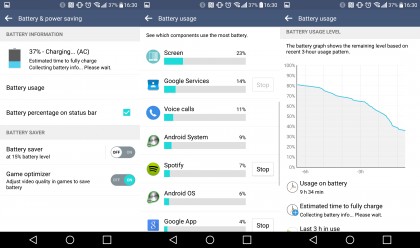
The large, high-res QHD screen makes sense as a reason to drain the battery, despite LG promising that the hexa-core processor should be less hungry and the GPU is smart enough to throttle less important actions. The Sony range is still the best for power management and once again confirmed that the need for a QHD screen doesn’t come close to being enough of a sacrifice for better battery life.
And there’s no inbuilt wireless charging, much to my wireless chagrin. If Samsung can chuck two types in the S6, then LG can put at least one standard in there – especially when there’s so much wasted space under the cover.
Camera
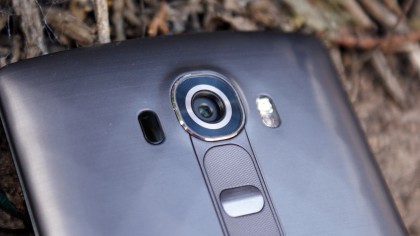
LG’s making a big deal about the camera prowess of the LG G4, and rightly so: if you’re going to release a new flagship phone, the screen, design, battery and camera should be the elements you get right before adding any bells and whistles on top.
The specs make for salivating reading: there’s a 16MP camera on the rear, and it’s fused with an f1.8 aperture that is designed to deliver spectacular low-light ability. On top of that LG has added in a huge amount of control to the camera, allowing users to choose the settings for pretty much any area of the snapper they wish to play with.
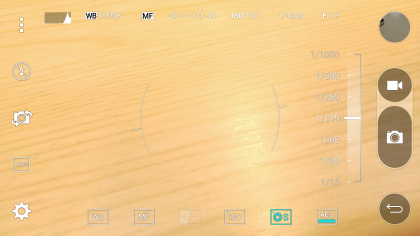
That includes RAW support, which is baked into Android these days and will attract some of the more photographically-minded among the smartphone community.
However, there’s the necessary ‘Auto’ and ‘Simple’ modes that will let you just take snaps as and when you want to, getting the best picture you can without having to mess around with the settings.
LG’s also touting the fact its camera loads in 0.6 seconds – coincidentally faster than Samsung’s 0.7 second opening speed on the Galaxy S6. However, where Samsung has added the quick open to double tapping the home button, LG’s speed is only when tapping the camera icon.
You can open the camera using the rear volume key, double tapping it to fire up the snapper, but that’s only when the phone is asleep – and it takes about two seconds to load. That’s not slow, but it’s nowhere near as fast as Samsung manages.
In practice, the LG G4 is an accomplished camera, and up there with the best I’ve ever tested. The Samsung Galaxy S6 and iPhone 6 both offer phenomenal pictures just by framing and tapping, and LG probably slips the G4 just in between these two in terms of picture quality.
The low-light claims definitely hold up to scrutiny – trying it in darker, shadowy places the results were amazing, even compared to the Galaxy S6, which has excellent ability in this space too.
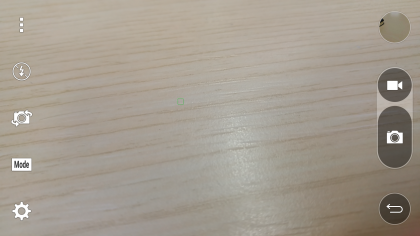
However, the processing LG places on top of its pictures is higher, so edges seem ever so slightly less sharp than that seen on the S6’s pictures – which I considered the gold standard in low light photography. It’s your choice though: slightly brighter pictures, more muddy results.
In good light though, the LG G4 really comes into its own. The laser autofocus will generally give good, sharp results and the colour and brightness levels are excellent.
That said, a quick snap picture doesn’t always give something sharp and in focus – that laser is either misfiring or not as impressive as the marketing sounds.
Overall, the LG G4 has a great camera, and will result in amazing pictures most of the time, with bright, clear and colourful images. The results are always too over-sharpened for my tastes, but that’s been a feature of LG’s camera prowess for years.

It’s worth noting that most of the above is talking about automatic mode, rather than the manual control, which gives brilliant pictures if you know how to play with the settings – manual focus is awesome, and altering the exposure and ISO settings never failed to get the right picture.
If you’re someone who knows what they’re doing with photography, this is a brilliant phone to play with – but for the automatic mode, it’s not quite as impressive. Very good, but just below the best I’ve seen.
Music, movies and gaming
Media is an area LG has been bossing for a while now, and that’s continued with the G4, thanks to great screen and onboard compatibility with loads of files, including lossless formats and the best the audio world can offer.
The music options through the app are excellent, with pretty every element of the app being something you can mess around with to get the best out of the audio experience.
We are a mostly approaching the point where there’s nothing really to add to the story – sure, it’s great that the phone can handle the high resolution audio, but that’s not much use when you consider there aren’t loads of file types that support it out there. Yes, it’s good to have the ‘Hi-Fi’ sound option on there, but right now there’s not a lot of use for it.
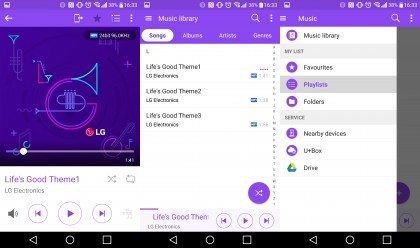
The LG Music player is actually surprisingly basic for something from the South Korean brand that usually revels in giving you as many options as possible. In fact, only the ability to split sound between headphones and Bluetooth when both are connected is something to make me perk up, where Samsung has a whole audio suite that can tailor music to getting the best out of any headphones, no matter the quality.
I do like the ‘music video’ option in the settings, as it will automatically search YouTube for the video for you to watch – it would be way cooler if this played in the window though.
Video
When it comes to movies, LG has got the bases covered once again. You’d assume that this was one of the best phones for watching videos on – after all, it’s got a cinema quality screen (according to LG) and the QHD display that delivers the joint-most pixels on the market.
On top of that, the curved glass is supposed to help with reflection to make it a more pleasant experience, so overall the signs were good.
And the experience matched, for the most part. When thinking about watching videos on the LG G4 my mind instantly points out the brightness levels – I has to push them right up to the maximum to get the best picture, as glare was often something of an issue (even when commuting on a train).
When the brightness is cranked up, the picture is good – really good – but like last year, I’m still not convinced we need QHD screens. No, scrap that: we don’t need them yet. There’s no great content out there which really takes the full potential of these screens and makes them into a compelling reason to buy the phone, so why place the battery sucking display on there at all?
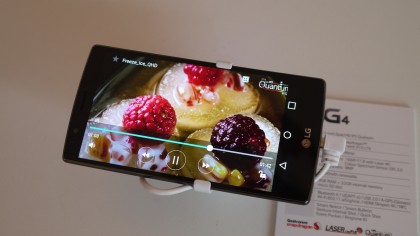
You can make a case for the menus and internet browsing looking a little sharper – and they do, for the most part – but it doesn’t add enough to the mix to make the LG G4 really need a super high resolution display.
The colours are deep and rich, although the red balance is really high, screaming out of the screen compared to the more muted blues and greens. It’s a tricky one to review the LG G4 for movies – while the display is clear, large and super sharp (all things I’m looking for in a phone for watching videos) it seems a bit unnecessary. That said, if battery life doesn’t bother you, the G4 offers excellent performance.
Gaming
For gaming I was expecting the LG G4 to be excellent – even two fewer cores shouldn’t hurt here, although I was intrigued to find out whether the higher res screen might drop the framerate.
As expected, it was great. The screen is expansive and responsive, the frame rate was rapid enough to crank out most of the top-end games on the market right now and 32GB of internal space should be enough to install loads of top-end options.
It’s still not got the ability to run multiple games in the background – they’ll still shut down as you flip between them – and there’s still way too much lag when trying to push it up onto a big screen. However, these aren’t really massive issues that affect your general day to day gaming.
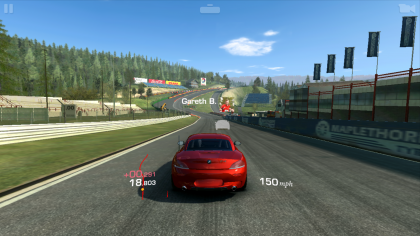
The only real issue for the LG G4 as a gaming device (although I would worry about the accelerometer performance long term given the issues with rotation I found in the phone) is the speed with which it munches the battery.
I wasn’t expecting that with the 808 hexa-core processor, so it’s a disappointment to see it run down so quickly.
What else should I consider?
LG has this habit of launching into a market that’s already well-stocked with new high-end flagships, and as such has a slew of rivals to fight off when making a case to be your new smartphone for the next two years.
LG has historically had price on its side when it comes to one-upping the competition, and while it’s not super cheap just yet it’s more than likely to drop in cost quickly. So how does it stack up against the competition?
Samsung Galaxy S6
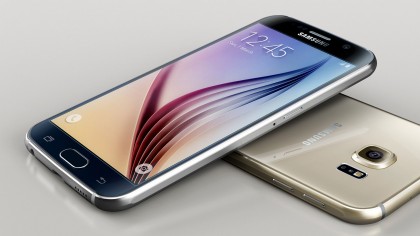
Samsung’s Galaxy S6 (and its brother, the Galaxy S6 Edge) is a phone that’s shown the South Korean brand still knows how to make a really decent handset.
While it’s got the same QHD screen as the LG G4, the shrunken dimensions combined with the Super AMOLED screen make it a really compelling thing to look at – plus it also comes in a variety of storage sizes, from 32GB to 128GB… although does so at the expense of a microSD slot, which LG offers.
It’s more expensive than LG’s offering, and the gap between the two will likely continue to grow – and weirdly the S6 is a more complex phone than the G4 too, where historically LG has been all about smashing as much stuff in its devices as possible.
HTC One M9
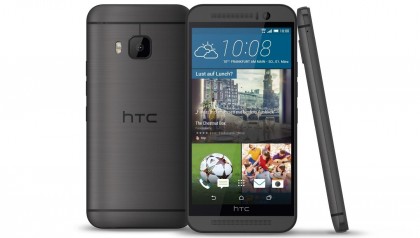
The HTC One M9 is almost the nemesis to the LG G4, adding in style and design prowess but dropping the camera and screen quality. However, there’s something about the refined package that HTC has created here that makes it more impressive, with the classy Sense overlay joining well with the Boomsound speakers and metal chassis to offer something rather decent.
That said, the LG’s leather back will entice some over the metal, the camera is much better here (with more modes) and the screen much better too, with both phones ending up neck and neck in battery life.
iPhone 6 / 6 Plus
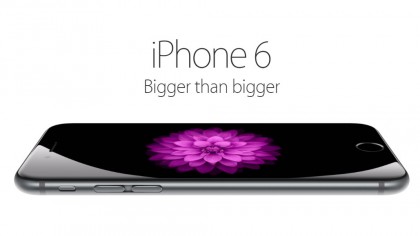 I’ve included both these phones here simply because they both offer slightly different competition to the G4. The iPhone 6 is one of the front-running phones on the market simply due to the mature experience it offers, but the 6 Plus brings a larger screen (similar to the G4) as well as extended battery life.
I’ve included both these phones here simply because they both offer slightly different competition to the G4. The iPhone 6 is one of the front-running phones on the market simply due to the mature experience it offers, but the 6 Plus brings a larger screen (similar to the G4) as well as extended battery life.
Both thrive through the iOS app ecosystem and familiar user interface, as well as exceptional design and speed under the finger. However, LG creams the two of them with its screen technology, and even though Apple’s got some great camera tech the South Korean brand still manages to provide improved snaps.
LG G3
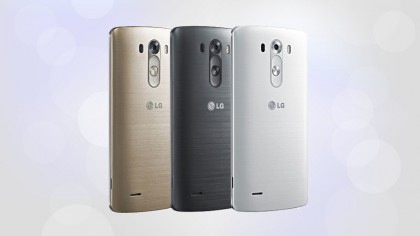
Oh, this is a tricky one. You’re an LG fan and you can’t decide which phone to go for. The LG G4 is superior in terms of photography, the screen is better quality (although the same res) and the design is curved and enhanced.
There’s more power stuffed inside and the battery life is roughly the same. So surely the new model? Well, no, as the LG G3 is lot, lot cheaper than the new offering, and comes with Android 5 too.
I’d advise the LG G4 as the phone of choice simply because it will get software upgrades for a year longer – but wait until it drops in price a little first.
Early verdict
The LG G4 is a phone that’s designed to keep building the head of steam LG’s creating in the smartphones space, building on the worldwide success of the LG G3 sales.
The brand should be applauded for trying something different with the design: the leather back and curved chassis are just the sort of thing that anyone looking to not be a ‘me-too’ brand should be doing.
There’s a lot going on with the LG G4, and for the most part it’s rather positive indeed.

We liked
The LG G4 has a large, expansive and rich screen – one of the best on the market, without doubt. I’m going to label it as a positive as while there’s not really enough content out there to make use of it (and therefore the battery sucking aspects are more annoying) the great colour reproduction and sharpness generally make everything look that much better.
The camera errs on the side of sharpness too much for my liking, and LG has repeated its usual trick of mudding the edges of some darker snaps, but overall I got great pictures time and again – the low light capabilities are exquisite at times.
The curved chassis might be thick, but that doesn’t mean it felt large in the hand, and I still believe the rear buttons make sense from an ergonomic point of view.
We disliked
The battery life is still too poor – what on Earth has Google done with Android to make Lollipop so thirsty on the power?
I never, ever got through a whole day on battery with the G4, no matter what I was doing, and quickly found myself topping up at 4PM just to make sure I could make it through the commute home. Not good enough, especially when a slower processor was chosen to help with battery drain.
The leather back just doesn’t work. Some out there will like the novelty, but it’s not even nice feeling leather. When you feel it for the first time it doesn’t feel like a quality leather wallet but more plastic leather – thin and grainy. Plus it’s leather on a phone – miles away from the premium feel of the HTC One M9 or iPhone 6.
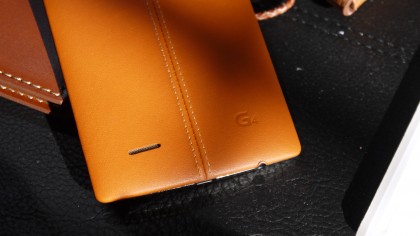
The plastic options are just too cheap-feeling to be used on a flagship phone.
The interface is good, but needs some work still – the bugs in the system can be forgiven as this isn’t the finished article from LG.
Early verdict
I know the number of LG fans is growing, and for good reason: the South Korean firm is working hard on bringing the best from its labs into a smartphone. The screen and camera on the LG G4 are really good additions and are genuine upgrades from last year’s G3.
However, the brand still hasn’t shown me it can make a truly market-leading smartphone. The decision to use leather and plastic is awful – LG needed a premium design and failed badly in trying to be a little different.
Those that value a removable battery need to realise that an all-in-one design comes at a price – so if you value the option of being able to swap out a power pack, you’ll have to accept a lowering of design prowess.
It feels slightly churlish criticising the G4 in some ways, as it’s a brilliant phone with a lovely screen and decent elements that people really want. Some of the issues mentioned will be fixed with new software, but there’s no way to upgrade the design over the air.
However, the overall package is just too rough around the edges to say this is a really brilliant phone, which is a shame as LG has the potential to really stick it to the market leaders in performance, design and price
![]()
Related Posts
December 6, 2021
7+ Web Design Trends for 2022: Which Will You Use?
December 6, 2021
The 10 Best WordPress Booking Plugins to Use On Your Website
December 6, 2021
How to Use a Web Cache Viewer to View a Cached Page
November 6, 2021
10 Modern Web Design Trends for 2022
November 6, 2021
Best Free SSL Certificate Providers (+ How to Get Started)
November 6, 2021
How to Design a Landing Page That Sends Conversions Skyrocketing
November 6, 2021
What Are the Best WordPress Security Plugins for your Website?
October 6, 2021
Your Guide to How to Buy a Domain Name
October 6, 2021
How to Build a WordPress Website: 9 Steps to Build Your Site
September 6, 2021
10 Best Websites for Downloading Free PSD Files
September 6, 2021
HTML5 Template: A Basic Code Template to Start Your Next Project
September 6, 2021
How Much Does It Cost to Build a Website for a Small Business?
September 6, 2021
A List of Free Public CDNs for Web Developers
September 6, 2021
6 Advanced JavaScript Concepts You Should Know
August 6, 2021
10 Simple Tips for Launching a Website
August 6, 2021
25 Beautiful Examples of “Coming Soon” Pages
August 6, 2021
10 Useful Responsive Design Testing Tools
August 6, 2021
Best-Converting Shopify Themes: 4 Best Shopify Themes
July 6, 2021
What Is Alt Text and Why Should You Use It?
July 6, 2021
24 Must-Know Graphic Design Terms
June 6, 2021
How to Design a Product Page: 6 Pro Design Tips
April 6, 2021
A Beginner’s Guide to Competitor Website Analysis
April 6, 2021
6 BigCommerce Design Tips For Big Ecommerce Results
April 6, 2021
Is WordPress Good for Ecommerce? [Pros and Cons]
March 6, 2021
Make Websites Mobile-Friendly: 5 Astounding Tips
March 6, 2021
Shopify vs. Magento: Which Platform Should I Use?
March 6, 2021
Top 5 Web Design Tools & Software Applications
February 6, 2021
Website Optimization Checklist: Your Go-To Guide to SEO
February 6, 2021
5 UX Design Trends to Dazzle Users in 2021
February 6, 2021
What Is the Average Page Load Time and How Can You Do Better?
February 6, 2021
Choosing an Ecommerce Platform That Will Wow Customers
February 6, 2021
7 Best Practices for Crafting Landing Pages with Forms
February 6, 2021
7 B2B Web Design Tips to Craft an Eye-Catching Website
January 6, 2021
Mobile-Friendly Checker | Check Your Site’s Mobile Score Now
January 6, 2021
8 Tips for Developing a Fantastic Mobile-Friendly Website
December 6, 2020
How to Add an Online Store to Your Website [4 Ways]
December 6, 2020
5 UX Design Tips for Seamless Online Shopping
November 6, 2020
Ecommerce Website Essentials: Does Your Site Have All 11?
November 6, 2020
5 Small Business Website Essentials You Need for Your Site
November 6, 2020
Your Website Redesign Checklist for 2020: 7 Steps for Success
May 1, 2020
Psychology of Color [Infographic]
April 21, 2020
How to start an online store that drives huge sales
January 3, 2020
5 Lead Generation Website Design Best Practices
March 6, 2019
6 Reasons You Should Redesign Your Website in 2019
March 6, 2019
7 Web Design Trends for 2019
February 19, 2019
Who owns the website/app source code, client or developer
February 7, 2019
Don’t Let Your Domain Names Expire in 2019
January 8, 2019
2019 Website Development Trends To Note
October 6, 2017
How Web Design Impacts Content Marketing
October 6, 2017
How to Choose a Navigation Setup
August 6, 2017
Why User Experience Matters to Marketing
July 6, 2017
5 Ways Web Design Impacts Customer Experience
September 6, 2016
How to Learn Angular
September 6, 2016
The Excuses for Not Having a Website (Infographic)
September 6, 2016
How to Build an Award-Winning Web Design Team
September 6, 2016
13 Free Data Visualization Tools
August 6, 2016
How Selling Pastries Helped Us Design a Better Product
August 6, 2016
11 Sites to Help You Find Material Design Inspiration
July 4, 2016
How to change free wordpress.com url
April 6, 2016
The 5 Best Free FTP Clients
April 6, 2016
7 Free UX E-Books Worth Reading
March 6, 2016
Can Handwritten Letters Get You More Clients?
December 10, 2015
Star Wars Week: How to create your own Star Wars effects for free
December 6, 2015
20 "Coming Soon" Pages for Inspiration
December 6, 2015
6 Free Tools for Creating Your Own Icon Font
December 6, 2015
9 Useful Tools for Creating Material Design Color Palettes
November 6, 2015
20 Free UI Kits to Download
November 6, 2015
50 Web Designs with Awesome Typography
November 6, 2015
When to Use rel="nofollow"
November 6, 2015
7 Free Books That Will Help You Become More Productive
November 6, 2015
50 Beautiful One-Page Websites for Inspiration
November 6, 2015
Circular Images with CSS
October 6, 2015
Lessons Learned from an Unsuccessful Kickstarter
October 6, 2015
5 Games That Teach You How to Code
October 6, 2015
Cheatsheet: Photoshop Keyboard Shortcuts
October 6, 2015
An Easy Way to Create a Freelance Contract for Your Projects
October 6, 2015
50 Design Agency Websites for Inspiration
September 29, 2015
JB Hi-Fi shutting the book on ebooks
September 24, 2015
Opinion: Quick, Quickflix: It's time to give yourself the flick
September 24, 2015
New Star Wars 360-degree video is among first on Facebook
September 21, 2015
Apple purges malicious iPhone and iPad apps from App Store
September 12, 2015
Apple's new Live Photos feature will eat up your storage
September 12, 2015
The latest Windows 10 Mobile preview has been delayed
September 12, 2015
IBM buys StrongLoop to add Node.js development to its cloud
September 8, 2015
Fake Android porn app takes your photo, then holds it ransom
September 6, 2015
50 Restaurant Websites for Inspiration
September 6, 2015
Zero UI — The Future of Interfaces
September 6, 2015
50 Beautiful Websites with Big Background Images
September 6, 2015
Infographic: 69 Web Design Tips
September 6, 2015
Free Windows 10 Icons
September 2, 2015
Instagram turns itself into a genuine messaging service
August 11, 2015
In Depth: How Microsoft taught Cortana to be more human
August 11, 2015
Windows 10 price, news and features
August 11, 2015
Windows 10's broken update introduces endless reboot loop
August 11, 2015
Windows 10 races to 27m installs
August 11, 2015
Windows 10 IoT Core gets first public release
August 10, 2015
iOS Tips: How to backup iPhone to an external drive
August 10, 2015
Windows 8.1 RT finally getting Windows 10 Start Menu
August 10, 2015
How to use Windows Hello
August 10, 2015
Review: Moto Surround
August 10, 2015
Review: Moto G (2015)
August 9, 2015
8 of the best free VPN services
August 8, 2015
Use Firefox? Mozilla urges you update ASAP
August 7, 2015
Mac Tips: Apple Mail: How to remove the Favorites Bar
August 7, 2015
How to make the OS X dock appear faster
August 7, 2015
Review: BQ Aquaris E45 Ubuntu Edition
August 7, 2015
Review: Acer Liquid Jade Z
August 6, 2015
How to reinstall Linux
August 6, 2015
How to reinstall Windows
August 6, 2015
Updated: Apple Music: release date, price and features
August 6, 2015
Social News Websites for Front-End Developers
August 6, 2015
10 Free JavaScript Books
August 6, 2015
50 Beautiful Blog Designs
August 6, 2015
Animated SVG Pipes Effect
August 6, 2015
Launching Your First App
August 5, 2015
Windows 10 goes freemium with paid apps
August 5, 2015
Updated: Week 1 with Windows 10
August 5, 2015
Mac Tips: How to manage Safari notifications on Mac
August 5, 2015
Microsoft Sway may kill the PowerPoint presentation
August 4, 2015
Microsoft gives Outlook on the web a new look
August 4, 2015
Mac OS X vulnerable to new zero-day attack
August 4, 2015
Windows 10 users warned of two scams
August 4, 2015
Microsoft's Docs.com is now available to everyone
August 3, 2015
Mac Tips: How to edit the Favorites sidebar on Mac
August 3, 2015
Updated: Windows 10 price, news and features
July 29, 2015
Review: HP ProDesk 405 G2
July 29, 2015
Hands-on review: HP Elite x2 1011
July 29, 2015
Hands-on review: Updated: Windows 10 Mobile
July 29, 2015
Review: Updated: Nvidia Shield Android TV
July 28, 2015
LIVE: Windows 10 launch: Live Blog!
July 28, 2015
How to prepare for your upgrade to Windows 10
July 28, 2015
Review: Updated: Windows 10
July 28, 2015
Review: Updated: HP Pro Tablet 608
July 28, 2015
Review: Heat Genius
July 28, 2015
Hands-on review: Moto X Play
July 28, 2015
Hands-on review: Moto X Style
July 28, 2015
Hands-on review: Moto G (2015)
July 28, 2015
Review: 13-inch MacBook Air (early 2015)
July 28, 2015
Hands-on review: OnePlus 2
July 28, 2015
Review: LG 65EG960T 4K OLED
July 28, 2015
Mac Tips: How to share printers on Mac
July 27, 2015
Apple Music's arrival hasn't opened Pandora's box
July 26, 2015
Review: Garmin Swim
July 25, 2015
How to merge OS X contacts into an existing list
July 25, 2015
Hands-on review: UPDATED: ZTE Axon
July 24, 2015
Mac Tips: How to zoom in on a Mac
July 24, 2015
What Windows 10 means for the enterprise
July 24, 2015
Review: JBL Charge 2 Plus
July 24, 2015
Review: Acer Aspire S7
July 24, 2015
Review: Updated: Canon G3 X
July 24, 2015
Review: Updated: iPad Air 2
July 24, 2015
Review: Thinksound On1
July 24, 2015
Review: Asus Chromebook Flip
July 24, 2015
Review: Garmin Forerunner 225
July 23, 2015
Review: Garmin nuvi 68LM
July 23, 2015
Review: Samsung Galaxy S6 Active
July 23, 2015
Review: Bowers and Wilkins P5 Wireless
July 23, 2015
Review: Dell XPS 15 (2015)
July 21, 2015
Review: Fuji S9900W
July 21, 2015
Review: Updated: Fitbit Surge
July 21, 2015
Review: UE Roll
July 21, 2015
Hands-on review: Ubik Uno
July 20, 2015
Review: Samsung HW-J650
July 20, 2015
Updated: 40 best Android Wear smartwatch apps 2015
July 20, 2015
Review: Acer Chromebook C740 review
July 20, 2015
Review: Huawei Talkband B2
July 20, 2015
Review: Dell Venue 10 7000
July 20, 2015
Review: Intel Core i7-5775C
July 17, 2015
Mac Tips: How to delete locked files on Mac
July 17, 2015
Review: Pebble Time
July 16, 2015
Microsoft just made Windows XP even less secure
July 16, 2015
Windows 8.1 RT is getting an update this September
July 16, 2015
OS showdown: Windows 10 vs Windows 8.1 vs Windows 7
July 16, 2015
Review: Acer CB280HK
July 15, 2015
Windows 10 is ready for new laptops and PCs
July 15, 2015
Explained: How to take a screenshot in Windows
July 15, 2015
Office for Windows 10 appears in latest build
July 14, 2015
Review: ZTE Axon
July 14, 2015
Review: ViewSonic VP2780-4K
July 14, 2015
Hands-on review: SanDisk Connect Wireless Stick
July 14, 2015
Review: Oppo PM-3
July 14, 2015
Review: BT 11ac Dual-Band Wi-Fi Extender 1200
July 14, 2015
Review: Fuji X-T10
July 13, 2015
How to build an SEO strategy for your business
July 13, 2015
Review: Lenovo ThinkPad Yoga 15
July 13, 2015
Review: Audio-Technica ATH-MSR7
July 13, 2015
Review: Garmin NuviCam LMT-D
July 13, 2015
Review: Dell Inspiron 13 7000
July 13, 2015
Hands-on review: AstroPi SenseHAT
July 13, 2015
Hands-on review: EE Rook
July 13, 2015
Hands-on review: Updated: HTC Vive
July 12, 2015
Here's the ultimate software list for PC fanatics
July 10, 2015
How to use the new Photos app for Mac
July 10, 2015
Windows 10 Insider Preview Build 10166 available now
July 10, 2015
Splunk spends big on cybersecurity acquisition
July 10, 2015
Making Windows 10 apps just got a whole lot easier
July 10, 2015
Review: Lenovo LaVie Z 360
July 9, 2015
OS X El Capitan public beta available right now
July 9, 2015
Microsoft finally unveils Office 2016 for Mac
July 9, 2015
Review: Updated: Chromecast
July 9, 2015
Review: Updated: Tesco Hudl 2
July 9, 2015
Review: Lenovo ThinkPad E550
July 9, 2015
Review: Updated: Google Nexus 6
July 8, 2015
What you need to know about Windows Server 2016
July 7, 2015
Microsoft to hike enterprise cloud pricing
July 6, 2015
Hacking Team end up being totally 0wned
July 6, 2015
Review: HP Pro Slate 12
July 6, 2015
Review: Samsung 850 Pro 2TB
July 6, 2015
Review: Asus RT-AC87U
July 6, 2015
Review: Jawbone UP2
July 6, 2015
Reimagining the Web Design Process
July 6, 2015
50 Clean Websites for Inspiration
July 6, 2015
15 Free Books for People Who Code
July 6, 2015
Web Storage: A Primer
July 6, 2015
A Look at Some CSS Methodologies
July 3, 2015
6 Essential Mac Mouse and Trackpad Tips
July 2, 2015
How to install a third party keyboard on Android
July 2, 2015
Review: UPDATED: Asus Zenfone 2
July 2, 2015
Review: Alienware 13
July 2, 2015
Review: HP DeskJet 1010
July 1, 2015
5 issues we want Apple Music to fix
June 13, 2015
Cortana will get its own button on Windows 10 PCs
June 12, 2015
Windows 10 will come with universal Skype app
June 12, 2015
iPad music production: 18 Best apps and gear
June 12, 2015
Windows 10 all set for early enterprise struggle
June 12, 2015
Review: Garmin VIRB Elite
June 11, 2015
Review: Updated: Nvidia Shield Tablet
June 11, 2015
Review: Nokia Lumia 635
June 10, 2015
Microsoft brings more online tweaks to Office 365
June 10, 2015
Mac Tips: How to use Screen Sharing in Mac OS X
June 9, 2015
Hands-on review: Meizu M2 Note
June 9, 2015
Hands-on review: EE 4GEE Action Camera
June 9, 2015
Review: Toshiba 3TB Canvio external hard drive
June 9, 2015
Review: Olympus SH-2
June 8, 2015
Hands-on review: Updated: Apple CarPlay
June 8, 2015
UPDATED: iOS 9 release date, features and news
June 8, 2015
Review: Updated: Roku 2
June 8, 2015
Review: Updated: PlayStation Vue
June 8, 2015
Review: Dell PowerEdge R730
June 8, 2015
Review: Canon SX710 HS
June 7, 2015
UPDATED: iOS 9 release date, features and rumors
June 7, 2015
Review: Lenovo S20-30
June 6, 2015
Free Writing Icons
June 6, 2015
15 CSS Questions to Test Your Knowledge
June 6, 2015
The Best CSS Reset Stylesheets
June 6, 2015
How CSS Specificity Works
June 5, 2015
'Delay' is a new feature in Windows 10
June 5, 2015
Review: Beyerdynamic Custom One Pro Plus
June 5, 2015
Latest SEO Marketing tools
June 5, 2015
Review: Nvidia Shield Android TV
June 5, 2015
Review: Honor 4X
June 5, 2015
Review: In Depth: Oppo R5
June 3, 2015
Hands-on review: Huawei P8 Lite
June 3, 2015
How To: How to create eBooks on a Mac
June 3, 2015
Review: Updated: Tidal
June 3, 2015
Review: Canon 750D (Rebel T6i)
June 2, 2015
Review: Updated: Asus ZenWatch
June 2, 2015
Review: Alcatel OneTouch Idol 3
June 2, 2015
Review: Updated: Nokia Lumia 1520
June 2, 2015
Review: Updated: Yotaphone 2
June 2, 2015
Review: Updated: Nokia Lumia 625
June 2, 2015
Review: Creative Muvo Mini
June 1, 2015
Review: Acer TravelMate P645 (2015)
June 1, 2015
Hands-on review: Corsair Bulldog
May 29, 2015
In Depth: NetApp: a requiem
May 29, 2015
July is looking definite for Windows 10 release
May 29, 2015
Hands-on review: Google Photos
May 28, 2015
Mac Tips: The 16 best free GarageBand plugins
May 28, 2015
Review: Canon 760D (Rebel T6s)
May 27, 2015
Review: Lenovo Yoga 3 14
May 27, 2015
Hands-on review: Serif Affinity Photo
May 27, 2015
Review: Garmin Vivoactive
May 26, 2015
Review: Datacolor Spyder5 Elite
May 26, 2015
Hands-on review: Sony Xperia Z3+
May 26, 2015
Review: Epson BrightLink Pro 1410Wi
May 26, 2015
Review: Technics Premium C700
May 26, 2015
Review: Canon EOS M3
May 26, 2015
Review: Updated: HTC One M9
May 26, 2015
Review: Updated: Sony Xperia Z3 Compact
May 25, 2015
Review: Updated: New Nintendo 3DS
May 25, 2015
Updated: 50 best Mac tips, tricks and timesavers
May 25, 2015
Updated: Windows email: 5 best free clients
May 25, 2015
Instagram is planning to invade your inbox
May 25, 2015
Review: Updated: Foxtel Play
May 24, 2015
How Windows 10 will change smartphones forever
May 24, 2015
Review: Vodafone Smart Prime 6
May 24, 2015
Review: Updated: iPad mini
May 22, 2015
Office Now may be Cortana for your work life
May 22, 2015
Review: Updated: Lenovo Yoga 3 Pro
May 22, 2015
Review: Microsoft Lumia 640 LTE
May 22, 2015
Review: Updated: Fitbit Flex
May 21, 2015
Updated: Best free Android apps 2015
May 21, 2015
Review: Asus ZenBook Pro UX501
May 21, 2015
Review: Sennheiser Momentum In-Ear
May 20, 2015
Hands-on review: UPDATED: Asus Zenfone 2
May 20, 2015
OS X 10.11 release date, features and rumors
May 18, 2015
Updated: Best free antivirus software 2015
May 18, 2015
iPhone 6S rumored to launch as soon as August
May 18, 2015
Microsoft ready to pounce and acquire IFS?
May 17, 2015
5 of the most popular Linux gaming distros
May 16, 2015
Review: Acer Chromebook 15 C910
May 16, 2015
Review: Lenovo ThinkPad X1 Carbon (2015)
May 16, 2015
Review: Polk Nue Voe
May 16, 2015
The top 10 data breaches of the past 12 months
May 16, 2015
Review: Updated: Quickflix
May 16, 2015
Review: LG Watch Urbane
May 16, 2015
Review: Razer Nabu X
May 16, 2015
Hands-on review: Updated: Windows 10
May 16, 2015
Review: UPDATED: Moto X
May 16, 2015
Review: Updated: Moto G (2013)
May 12, 2015
Review: TomTom Go 50
May 12, 2015
Review: Updated: Moto G (2014)
May 12, 2015
Review: Garmin Vivofit 2
May 12, 2015
Review: Asus Transformer Book Flip TP300LA
May 11, 2015
Review: MSI GT80 Titan
May 11, 2015
Review: Monster SuperStar BackFloat
May 9, 2015
Review: Updated: Apple Watch
May 7, 2015
5 million internet users infected by adware
May 7, 2015
Review: Updated: New MacBook 2015
May 6, 2015
Android M will be shown at Google IO 2015
May 6, 2015
Review: Epson WorkForce Pro WF-4630
May 6, 2015
Review: Master & Dynamic MH40
May 6, 2015
How to Use Gulp
May 6, 2015
Getting Started with Command-Line Interfaces
May 6, 2015
What It’s Like to Contribute to WordPress
May 6, 2015
Ultimate Guide to Link Types for Hyperlinks
May 6, 2015
11 Things You Might Not Know About jQuery
May 5, 2015
Hands-on review: Updated: PlayStation Now
May 5, 2015
Review: Lenovo ThinkPad Yoga 12
May 5, 2015
Review: Updated: iPad Air
May 5, 2015
Review: Panasonic SZ10
May 5, 2015
Review: Updated: Fetch TV
May 4, 2015
Review: Cambridge Audio Go V2
May 3, 2015
Review: Lightroom CC/Lightroom 6
May 2, 2015
5 of the most popular Raspberry Pi distros
May 1, 2015
Review: PlayStation Vue
May 1, 2015
Hands-on review: Updated: Microsoft HoloLens
April 30, 2015
Build 2015: Why Windows 10 may not arrive until fall
April 29, 2015
The biggest announcements from Microsoft Build 2015
April 29, 2015
Hands-on review: TomTom Bandit
April 29, 2015
Hands-on review: EE Harrier Mini
April 28, 2015
Review: Samsung NX500
April 28, 2015
Hands-on review: LG G4
April 28, 2015
Review: Patriot Ignite 480GB SSD
April 28, 2015
Hands-on review: EE Harrier
April 28, 2015
Review: Linx 10
April 28, 2015
Review: 1&1 Cloud Server
April 26, 2015
Hands-on review: Acer Iconia One 8
April 25, 2015
How to run Windows on a Mac with Boot Camp
April 24, 2015
Dropbox Notes poised to challenge Google Docs at launch
April 24, 2015
Hands-on review: Acer Aspire E14
April 24, 2015
Hands-on review: UPDATED: Valve Steam Controller
April 24, 2015
Review: Acer Iconia One 7
April 23, 2015
Windows 10 just revived everyone's favorite PC game
April 23, 2015
Google opens up Chromebooks to competitors
April 23, 2015
Here's how Outlook 2016 looks on Windows 10
April 23, 2015
Hands-on review: Updated: Acer Liquid M220
April 23, 2015
Hands-on review: Acer Aspire Switch 10 (2015)
April 23, 2015
Hands-on review: Acer Aspire R 11
April 22, 2015
Review: Alienware 17 (2015)
April 22, 2015
Hands-on review: Updated: HP Pavilion 15 (2015)
April 21, 2015
This is how Windows 10 will arrive on your PC
April 21, 2015
Review: iMac with Retina 5K display
April 21, 2015
Review: Epson XP-420 All-in-One
April 18, 2015
Google Now brings better search to Chrome OS
April 17, 2015
Review: Epson Moverio BT-200
April 17, 2015
Review: Pentax K-S2
April 16, 2015
Updated: Android Lollipop 5.0 update: when can I get it?
April 15, 2015
Hands-on review: Updated: Huawei P8
April 15, 2015
Review: SanDisk Ultra Dual USB Drive 3.0
April 15, 2015
Review: Updated: LG G3
April 15, 2015
Review: Updated: LG G3
April 15, 2015
Review: Crucial BX100 1TB
April 13, 2015
iOS 8.4 beta reveals complete Music app overhaul
April 13, 2015
Linux 4.0: little fanfare for a tiny new release
April 13, 2015
Achievement unlocked: Microsoft gamifies Windows 10
April 13, 2015
Best Android Wear smartwatch apps 2015
April 13, 2015
Review: Acer Aspire R13
April 12, 2015
Review: TP-Link Archer D9
April 10, 2015
Microsoft's new browser arrives for Windows 10 phones
April 10, 2015
Review: LG UltraWide 34UC97
April 9, 2015
Office now integrates with Dropbox on the web
April 9, 2015
Now you can buy video games with Apple Pay
April 9, 2015
Updated: iOS 8 features and updates
April 9, 2015
Microsoft's stripped down Nano Server is on the way
April 8, 2015
Skype Translator gets even more features
April 8, 2015
Windows mail services hit by widespread outages
April 8, 2015
Review: UPDATED: Amazon Echo
April 8, 2015
Hands-on review: Dell Venue 10 7000
April 8, 2015
Review: Updated: OS X 10.10 Yosemite
April 7, 2015
Google's GMeet could kill teleconferencing
April 7, 2015
Is Redstone the first Windows 10 update?
April 7, 2015
Next peek at Windows Server 2016 due next month
April 7, 2015
Review: Acer Aspire Switch 11
April 7, 2015
Review: Adobe Document Cloud
April 6, 2015
Hands-on review: Updated: New MacBook 2015
April 6, 2015
Freebie: 100 Awesome App Icons
April 6, 2015
Six Revisions Quarterly Report #1
April 6, 2015
A Modern Approach to Improving Website Speed
April 6, 2015
Disable Text Selection with CSS
April 4, 2015
Review: Nikon D7200
April 3, 2015
Amazon Prime video now streams to any Android tablet
April 3, 2015
Review: Google Cardboard
April 3, 2015
Review: MSI WS60
April 2, 2015
Chrome users can now run 1.3 million Android apps
April 2, 2015
See Windows 10 Mobile running on an Android handset
April 2, 2015
Review: Mini review: Macphun Noiseless Pro 1.0
April 2, 2015
Review: Intel SSD 750 Series 1.2TB
April 2, 2015
Review: BenQ TreVolo
April 2, 2015
Hands-on review: Nikon 1 J5
April 1, 2015
Microsoft launches Windows 10 music and video apps
April 1, 2015
Review: mini review: Sony XBA-H1
December 19, 2014
Review: CoPilot Premium sat nav app
December 19, 2014



























































































































































































































































































































































































































































































































































































